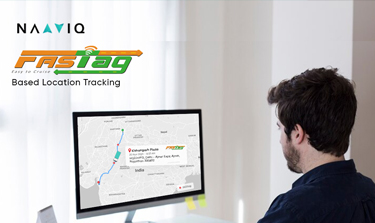
Take some of the most important components of resilience: the ability to absorb shocks, be agile, and recover quickly. Companies can integrate their strategic planning, technology, and adaptable processes-within their own contexts, of course-to minimize geopolitical-induced damage and to continue to operate. This article also tells us what supply chain managers can do in the form of strategies and tools to guarantee safekeeping for operational flow during turbulent times.
1. Understanding the Scope of Geopolitical Disruptions
Geopolitical disruptions can arise from a wide range of events, each with unique consequences. Here are a few key examples:
Trade Wars and Tariffs
Trade wars can cause sudden increases in costs and disruption in the supply chains by levying tariffs and restrictions on imports and exports. For example, such tariffs on an essential part could lead companies into new suppliers or new locations for production delaying production and increasing costs.
Sanctions and Embargoes
It may be said that companies relying on areas or partners that are affected will have their supply chains affected due to the placing of over sanctions on countries. Companies lose out on shipments, resources go scarce, and unfamiliar markets will have to be searched.
Political Instability and Conflicts
Political unrest or military conflict can sever the transportation routes and put workers in jeopardy, rendering operations either difficult or impossible in such affected areas. This thus demands companies to obtain quick adaptation mechanisms in order to maintain continuity.
By understanding the types of geopolitical risks that can impact their operations, companies are better positioned to create effective resilience strategies.
2. Key Strategies for Building Resilience
Diversifying Suppliers and Production Locations
One way of configuring the supply-chain resilience is through diversification. It involves establishing a network of suppliers in different regions so that there is no total reliance on a specific country. This is critical because for a manufacturer, depending solely on a supplier or a region usually causes halts in production when that supplier cannot provide goods due to some political unrest. For instance, there are raw materials that would be sourced in both South America and Asia by a company. When just one of them gets out of supply by virtue of an event, the other retains supply.
Implementing a Flexible Inventory Strategy
Inventory management is vital for ensuring continuity during disruptions. Effective management of buffer stock or safety stock for strategic components reduces the effect of supply delays on organizations. This, however, has to be associated with the cost of excessive inventory and stockout risks. Flexible inventory management, such as Just-in-Case (JIC) inventory, offers an optimum solution in cushioning the unexpected with minimum overhead for inventory.
Establishing Robust Risk Management Processes
Proactive risk assessment is essential for navigating geopolitical challenges. By identifying potential threats and evaluating their potential impact, companies can create contingency plans. This involves analyzing factors like supply chain dependencies, alternative transportation routes, and the stability of supplier countries. Risk management should be an ongoing process, with frequent reviews and updates based on current events.
Building Strong Relationships with Suppliers
Indeed, before one undertakes to navigate through all of these humbling experiences of geopolitical disturbances, strong, really strong supplier relations might hold out great hope and really blessed promises.When reliable and open suppliers are combining to give businesses timely critical information, their decisions become well-informed. Collaborative, partnership-based relationships with suppliers guarantee increased communications that could really matter when the business is seeking flexibility at times of crisis. Take, for example, a supplier who experiences delays in political turmoil; having a transparent avenue with the buyer could have availed other diversion routes.
3. Leveraging Technology for Real-Time Visibility and Decision-Making
Contemporary technology developments do bring out dynamic tools for monitoring and managing supply chain operations in real time. Using AI, IoT, and data analytics, a company would be able to monitor a cargo shipment moving within the supply chain, analyze the patterns in inventory levels, and even find possible disruptions before they have an effect on operations.
Using Predictive Analytics for Proactive Planning
Based on, the predictive analytics help organizations view and anticipate the interruptions which would happen using the past as well as real data. By tracing the former patterns of trade, political stability, and transportation logistics, such predictive models will enable the possible flagging of those risks in advance. This foresight permits SCM managers to take diverse preventive actions like adjusting inventory levels and rerouting shipments to minimize such disruptions.
Real-Time Supply Chain Visibility with IoT
IoT technology provides visibility and activity tracking from end to end, enabling companies to track shipments, monitor environmental conditions, and assess the real-time status of inventory. IoT-enabled sensors allow companies to monitor shipment status updates as their shipments move through international borders, highlighting any potential for delays and facilitating timely, quick, effective, and swift adjustments. Such an advanced level of real-time visibility would be fundamental for understanding, interpreting, and responding to changes in conditions brought about especially by geopolitical disruptions.
Leveraging AI and Automation for Agility
AI & Automation Can make Fast and Data-Driven Decisions: AI tools analyze incoming data and derive actionable insights for an organization, helping it rapidly adapt to any disruption. Automated systems can also optimize the administrative load associated with multiple suppliers, inventory checks, and transportation schedules so an entire workforce concentrates its efforts on strategic rather than menial actions. For example: NaaviQ's AI-driven solution provides real-time insights that allow businesses to respond flexibly to supply chain interruptions while at the same time providing them with uninterrupted operations.
4. Creating a Resilience Culture Within the Organization
Resilience does not only require technology and diversification: it requires a corporate-wide paradigm shift as well. Businesses that create cultures of resilience are better set to handle disruption itself.
Training and Empowering Teams
The best resources for establishing a resilient supply chain solidify the importance of staff who manage it. They imbibe training in crisis management to ensure that their teams can act swiftly in making effective decisions. Decision-making should therefore be vested on teams at the time of disruption. Thus, supply chain managers, whenever faced with route alterations or resource reallocations, do so with short notice.
Encouraging Collaboration Across Departments
Different sections of the supply chain get affected by disruptions. They cut across procurement and customer services. Cross departmental collaborations therefore ensure common understanding on contingency plans from all subscribing parties and efforts toward cohesion in response. Cross functional views between the different units of a company will yield a complete strategy that addresses not only what goes wrong inside the walls of the operations unit but also customer facing.
5. Case Studies: Real-Life Examples of Resilient Supply Chains
Real-world examples offer valuable lessons in resilience. For instance:
Automotive Industry
When certain countries restricted their trading, automotive companies made a diversified supplier for every region to minimize the dependence of any supplier country. Thus, they were able to continue with production while parts of their supply chain were acknowledged to be affected.Pharmaceutical Sector
The COVID-19 pandemic highlighted the importance of supply chain resilience in pharmaceuticals. Companies that invested in multiple production sites were able to scale up quickly, ensuring a consistent supply of essential medications.
These cases demonstrate that proactive planning and a diversified approach can make a significant difference in the face of geopolitical disruptions.
Conclusion: Building a Future-Proof Supply Chain with NaaviQ
In today's unpredictable world, supply chain resilience is no longer a nice-to-have. By investing in diversified sourcing, flexible inventories, and new technologies, organizations can mitigate the impacts of geopolitical disruptions globally and keep business running as normal again. NaaviQ-above is not purely supply chain solutions but indeed the greater equipment of organizations today in anticipating, managing, and overcoming supply chain challenges. Real-time visibility to predictive analytics-that makes a difference in building adaptive resilient supply chains for businesses amid disruptions caused externally.
Geopolitical issues would probably still plague the global supply chain. Companies adopting proactive strategies now will find themselves fairly set for tomorrow's uncertain terrafirma.




